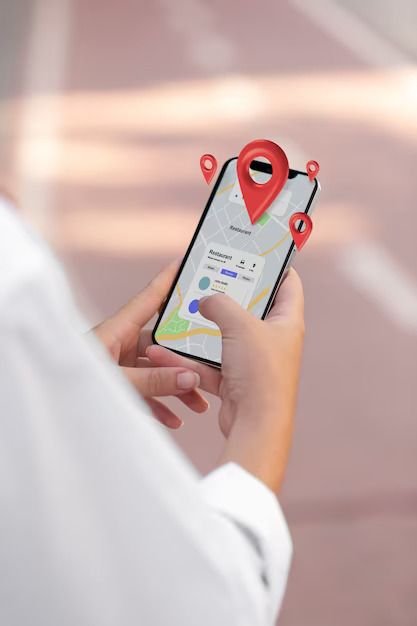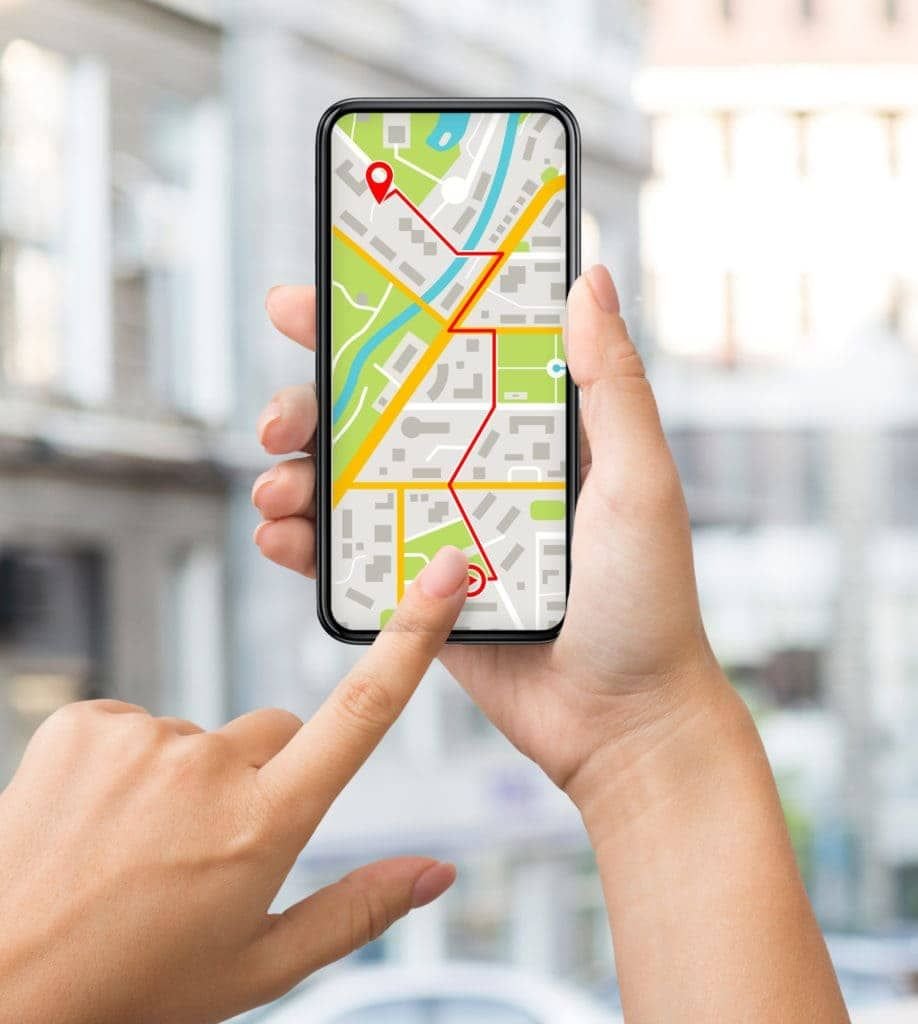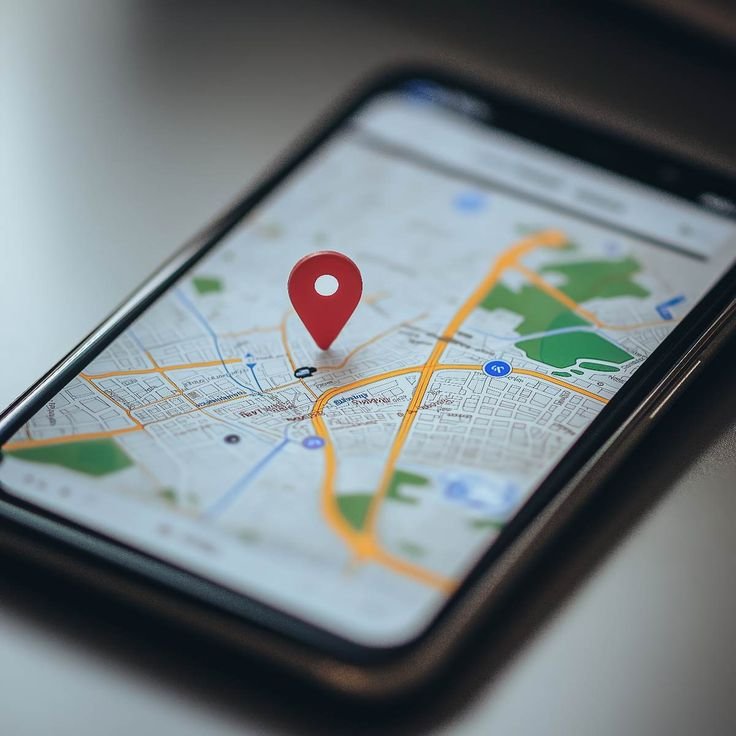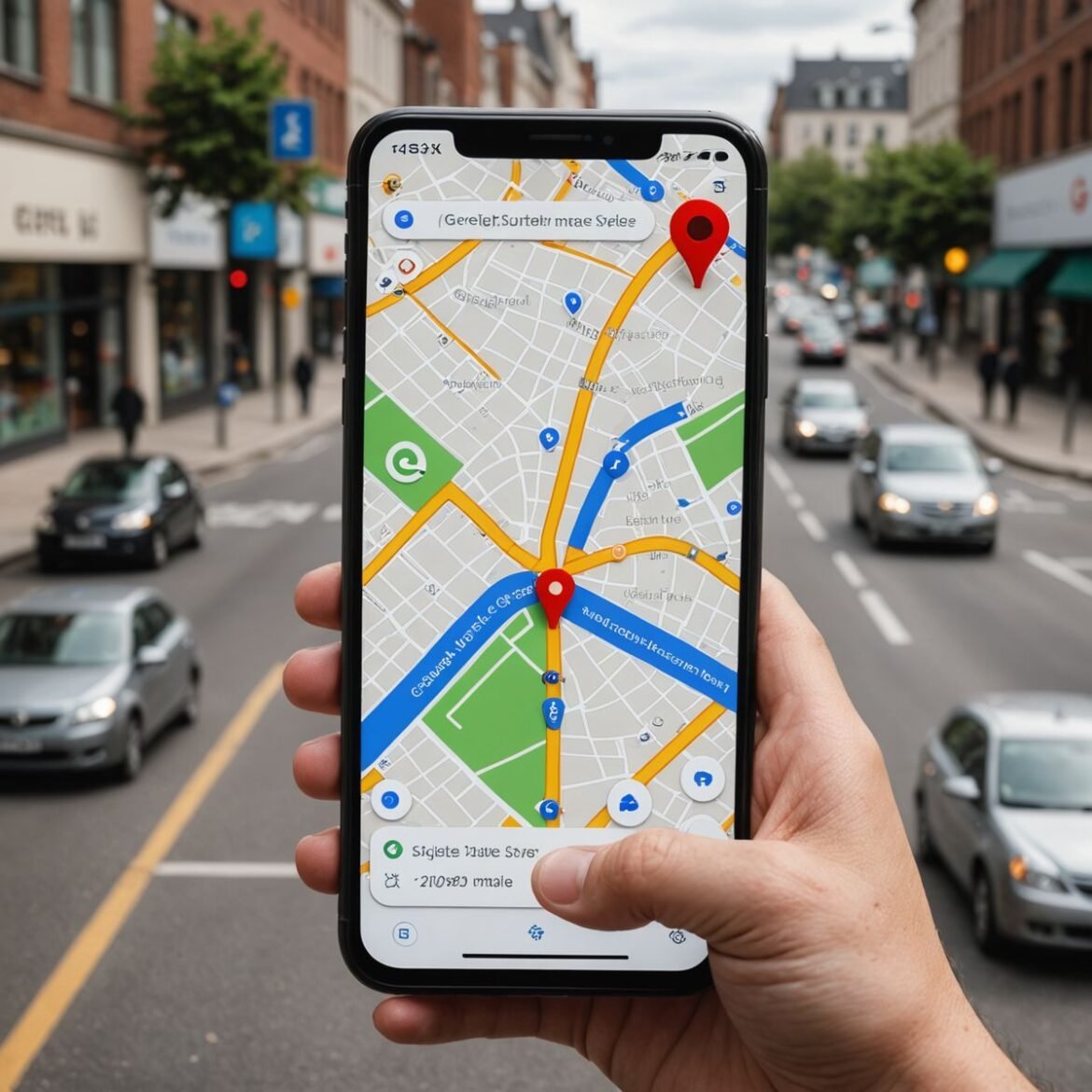Introduction
In today’s world, GPS (Global Positioning System) has become an invisible yet essential part of our everyday lives. Whether you’re using Google Maps to find the quickest route to a new café, relying on Uber to call a ride, tracking your morning jog with a fitness app, or even receiving a package from a delivery service, GPS technology plays a vital role in making these processes smooth and efficient.
But what happens when GPS Not Updating stops working the way it should? One of the most common issues users face is GPS not updating location accurately. Imagine being on a road trip in an unfamiliar city, and your navigation app shows you stuck at a traffic light you passed ten minutes ago. Or picture a delivery driver constantly arriving late because their GPS Not Updating lags, showing them on the wrong street. These situations aren’t just frustrating—they can cause wasted time, financial losses, and in some cases, even safety risks.
The problem of GPS Not Updating inaccuracy has become more noticeable in recent years because of our increasing dependence on location-based services. From ride-hailing apps like Uber, Ola, and Lyft to food delivery services like Zomato, Swiggy, DoorDash, and UberEats, almost every real-time service we use depends heavily on GPS working properly. When GPS Not Updating fails, it doesn’t just inconvenience an individual—it affects businesses, logistics, and emergency services.
So why does GPS Not Updating sometimes fail to update location accurately? What are the reasons behind such issues, and more importantly, how can they be fixed? This article will take a deep dive into the causes, troubleshooting steps, preventive measures, and future solutions for GPS inaccuracies. By the end, you’ll have a comprehensive understanding of how GPS Not Updating works, why it sometimes struggles, and what you can do to ensure it performs at its best.

How GPS Works (Simplified)
To understand why GPS Not Updating fails to update properly, it’s important to first understand how GPS actually works. Most people think GPS is simply “internet-based tracking,” but that’s only part of the story.
1. The Role of Satellites
The Global Positioning System is made up of at least 24 satellites orbiting the Earth, though in reality, more than 30 are active at any given time. These satellites continuously send signals down to Earth.
When your smartphone, smartwatch, or GPS-enabled device wants to find your location, it listens to these signals. To determine your precise position, your device needs to connect to at least four satellites. Using the time it takes for the signals to travel, your device calculates your latitude, longitude, altitude, and movement speed.
2. Assisted GPS (A-GPS)
While satellites provide the raw data, smartphones often rely on Assisted GPS (A-GPS) to speed things up. A-GPS Not Updating uses cellular towers, Wi-Fi networks, and internet connections to provide a faster and more accurate location fix.
For example, if you’re in a city with tall buildings blocking satellite signals, your phone may use Wi-Fi hotspots and nearby cell towers to “guess” your position until the satellites are accessible again. This is why GPS Not Updating seems to work faster when you’re in a well-connected urban area compared to being in a remote forest.
3. Sensors in Smartphones
Modern devices don’t rely on satellites alone. Your smartphone uses:
- Accelerometer – detects movement speed.
- Gyroscope – determines rotation and orientation.
- Magnetometer (Compass) – helps with direction.
- Barometer – in some devices, measures altitude.
These sensors work alongside GPS Not Updating data to ensure smoother and more accurate tracking. For example, when you walk through a tunnel and lose satellite signals, your phone may still track your approximate steps using its sensors until GPS reconnects.
4. Why GPS Updates Can Lag
Now that we know how GPS Not Updating works, it’s easier to understand why location updates might fail. If your phone cannot get signals from enough satellites, if your sensors are miscalibrated, or if your internet connection is weak (affecting A-GPS), your location will appear “stuck,” delayed, or inaccurate.
Causes of GPS Not Updating Accurately
When your GPS Not Updating doesn’t update your location properly, it can feel like the device is malfunctioning. But in most cases, the issue isn’t with GPS itself—it’s with the environment, your device, or the apps using it. Below are the most common causes:
1. Device-Related Issues
- Outdated Software or Firmware
- If your smartphone’s operating system or your navigation app hasn’t been updated, it may not communicate properly with satellites or servers.
- Older versions of apps like Google Maps or Waze sometimes contain bugs that cause location freezes or lagging updates.
- Battery-Saving Modes
- Most smartphones have power-saving features that restrict background activity.
- When enabled, these modes may turn off GPS tracking or limit sensor use to save battery. This results in location updates stopping unless the app is open in the foreground.
- Faulty GPS Antenna or Hardware Damage
- Physical damage to the device’s GPS Not Updating antenna can prevent it from receiving strong signals.
- Dropping your phone, water exposure, or manufacturing defects can also reduce accuracy.
- Cache and App Data Issues
- Over time, apps like Google Maps, Uber, or fitness trackers build up cache data.
- Corrupted cache can cause delays in refreshing the GPS Not Updating location.
- Phone Cases and Accessories
- Thick, metallic, or poorly designed protective cases can block or weaken satellite signals.
- For example, rugged phone cases sometimes interfere with GPS Not Updating reception.
2. Environmental Interference
- Tall Buildings and Urban Canyons
- Skyscrapers in cities often block satellite signals or cause them to bounce (a phenomenon called multipath interference).
- This makes the device think you are in a slightly different spot, leading to GPS drift.
- Underground and Indoors
- GPS signals cannot penetrate well underground or inside buildings.
- This is why your location “freezes” in tunnels, subways, or shopping malls.
- Dense Forests or Mountains
- Trees, cliffs, and mountain ranges block the line of sight between your device and satellites.
- Hikers often face GPS Not Updating inaccuracy when exploring remote regions.
- Bad Weather Conditions
- Heavy storms, thick clouds, and solar interference can sometimes degrade satellite communication.
- Although rare, this still affects GPS Not Updating precision.
3. Network and Signal Problems
- Weak Satellite Signal
- GPS requires signals from at least four satellites for an accurate fix.
- If fewer are available, your device may “guess” your location, leading to errors.
- Wi-Fi and Mobile Data Interference
- Assisted GPS Not Updating (A-GPS) relies on cellular towers and Wi-Fi.
- If your data connection is unstable, your device may fail to refresh your location properly.
- Switching Between Networks
- Moving from 4G to 3G, or between Wi-Fi and mobile data, can cause temporary GPS Not Updating lags.
- This is often seen in moving vehicles.
4. App-Specific Problems
- Location Permission Issues
- If an app doesn’t have the correct permissions (e.g., “Allow location all the time”), it may stop updating once it runs in the background.
- Outdated or Buggy Apps
- Apps like Uber, Ola, or fitness trackers often require real-time updates.
- Outdated versions may not sync GPS Not Updating data smoothly.
- Incorrect Settings
- Sometimes, users accidentally turn off “High Accuracy Mode” in Android or “Precise Location” in iOS.
- This causes the app to rely only on Wi-Fi or Bluetooth, which is less accurate than GPS.
- Server-Side Issues
- Sometimes the problem is not your phone at all but the app’s servers.
- For example, during peak usage hours, Google Maps or Uber might struggle to refresh locations in real-time.
5. Other Rare Causes
- Magnetic interference from nearby electronics or large metal objects.
- Custom ROMs or jailbroken devices sometimes break GPS Not Updating functionality.
- Regional satellite restrictions – some countries limit access to specific satellite systems, reducing accuracy.

Signs of GPS Inaccuracy
GPS problems don’t always appear the same way. Sometimes, your device might stop updating altogether, while at other times, it could show you moving in the wrong direction. Recognizing the symptoms of GPS Not Updating inaccuracy is the first step in diagnosing and fixing the issue.
Here are the most common signs:
1. Frozen Location on the Map
- The most obvious symptom is when your location “sticks” in one spot even though you’re moving.
- For example, you might drive five kilometers, but Google Maps still shows you at the original starting point.
- This usually happens due to weak satellite signals, battery-saving restrictions, or app crashes.
2. Delayed Location Updates
- Sometimes your GPS does update, but with a noticeable delay.
- For example, when jogging with a fitness tracker, your app might show you 200–300 meters behind your actual location.
- This lag is caused by poor signal reception, slow internet connection (A-GPS Not Updating delays), or sensor miscalibration.
3. Incorrect Directions
- If you notice your navigation app constantly redirecting you or suggesting wrong turns, it’s a clear sign of GPS Not Updating inaccuracy.
- This often occurs in urban canyons (tall buildings reflecting signals) or when the compass/magnetometer in your phone is misaligned.
4. Jumping or Drifting Location
- A very common symptom is when your location “jumps” across the map even though you haven’t moved.
- For example, you may be standing still at a bus stop, but the GPS shows you hopping across nearby streets.
- This happens due to multipath interference (signal bounce) or device sensors overcompensating.
5. “GPS Signal Lost” Notifications
- Some apps, like Waze or Google Maps, will display a “Searching for GPS” or “GPS signal lost” warning.
- This indicates that your device has completely lost connection to satellites.
- It usually happens indoors, underground, or in very remote areas.
6. Battery Drain and Overheating
- Sometimes, GPS Not Updating inaccuracies aren’t obvious on the map but show up in the behavior of your phone.
- If your device keeps struggling to find satellites, it may use excessive battery power, leading to:
- Rapid battery drain
- Overheating during navigation
- This is a hidden but important sign that your GPS Not Updating is not functioning efficiently.
7. Inconsistent Tracking in Fitness Apps
- Runners, cyclists, and hikers often notice GPS Not Updating errors in apps like Strava, Nike Run Club, or Fitbit.
- Signs include:
- Straight lines instead of curved paths
- Missing portions of the route
- Wrong distance measurements
- These inaccuracies are usually due to poor satellite locks or restricted background activity.
8. Navigation Apps Misplacing Starting or Ending Points
- Sometimes, your GPS works during the journey but misplaces the starting location or final destination.
- For example, Uber might show your pickup point as a nearby street instead of your exact location.
- This happens when the device takes too long to establish a first GPS fix or relies on approximate Wi-Fi positioning.
9. Mismatch Between GPS and Reality
- A classic sign of GPS inaccuracy is when the app shows you walking on water, through buildings, or off the road.
- While funny at times, this can be extremely frustrating if you’re depending on precise directions.
10. Unreliable Performance in Specific Locations
- If your GPS always misbehaves in certain areas (e.g., downtown streets, basements, near airports), it’s a sign that environmental interference is the main culprit.
Troubleshooting GPS on Smartphones
When your GPS is not updating accurately, most of the time the problem can be resolved by troubleshooting your smartphone settings, apps, and sensors. Below are step-by-step solutions for both iOS and Android devices, along with general tips that apply to all smartphones.
1. Check Location Settings
For iOS:
- Go to Settings → Privacy → Location Services.
- Ensure Location Services is turned on.
- Scroll down to the app you’re using (e.g., Google Maps, Uber) and make sure Precise Location is enabled.
- Set the app permission to “Always” if you want background tracking.
For Android:
- Go to Settings → Location.
- Ensure Location is switched on.
- Tap Mode or Advanced → Google Location Accuracy.
- Select High Accuracy, which uses GPS, Wi-Fi, and mobile networks for the most precise location.
Tip: Even if your location is on, disabling “High Accuracy” will make GPS less precise, so always keep it enabled for navigation apps.
2. Restart the Device
- Sometimes, the simplest solution works. Restarting your phone resets the GPS sensors and clears temporary glitches.
- After rebooting, open the app again and check if the GPS updates correctly.
3. Toggle Airplane Mode
- Turning Airplane Mode on for 10–15 seconds and then off can help your device reconnect to satellites and cellular networks.
- This method can also fix GPS delays caused by network switching issues.
4. Clear App Cache and Data
For Android:
- Go to Settings → Apps → [App Name] → Storage → Clear Cache / Clear Data.
- Reopen the app and check location accuracy.
For iOS:
- iOS doesn’t have a direct cache-clearing option, but you can:
- Delete the app.
- Reinstall it from the App Store.
Why this works: Cached data can get corrupted, causing the app to misread GPS signals.
5. Check App Permissions
- Make sure the app has permission to use location all the time, not just when the app is open.
- For rideshare and fitness apps, background location access is essential.
6. Update Apps and OS
- Outdated apps or operating systems often cause GPS errors.
- Go to App Store / Play Store and update all navigation and tracking apps.
- Also check for system updates under Settings → General → Software Update (iOS) or Settings → Software Update (Android).
7. Calibrate the Compass and Sensors
iOS:
- Open Compass app.
- Follow the on-screen instructions to move your phone in a figure-eight motion.
- This recalibrates the magnetometer, improving direction accuracy in maps.
Android:
- Open Google Maps → Settings → Calibrate Compass.
- Move your phone in a figure-eight pattern as instructed.
Note: Sensor calibration helps prevent GPS drift, especially when walking or driving in dense areas.
8. Check for Interference
- Remove any metallic or magnetic phone cases.
- Avoid placing your phone near other electronics while using GPS.
- Ensure the device is not overheating, as high temperatures can affect sensors.
9. Use GPS Testing Apps
- Apps like GPS Status & Toolbox (Android) or GPS Diagnostics (iOS) can:
- Show the number of satellites your device is connected to.
- Display the signal strength.
- Help you reset or recalibrate GPS data (clear A-GPS data).
10. Reset Network Settings
iOS:
- Go to Settings → General → Reset → Reset Network Settings.
- This clears Wi-Fi, Bluetooth, and cellular settings, which often improves A-GPS accuracy.
Android:
- Go to Settings → System → Reset Options → Reset Wi-Fi, Mobile & Bluetooth.
Warning: You will need to reconnect to Wi-Fi networks and re-enter passwords after this step.
11. Check Internet Connection
- For A-GPS, a weak or unstable internet connection can delay location updates.
- Make sure your device is connected to a stable mobile network or Wi-Fi.
12. Avoid Battery Saving Restrictions During Navigation
- Disable battery saver mode when using navigation apps.
- On Android, also check App Battery Optimization and exclude navigation apps from restrictions.
13. Advanced Tip: Use External GPS Devices
These devices can significantly improve location precision for activities like hiking, cycling, or boating.
Some users rely on external Bluetooth GPS receivers for enhanced accuracy, especially in areas with poor satellite reception.

Troubleshooting GPS in Cars and External Devices
While smartphones are the most common GPS devices today, vehicle navigation systems and standalone GPS trackers are still widely used. These devices have their own set of problems and troubleshooting techniques. Understanding these can help restore accurate location updates, whether you’re driving, boating, or using GPS for professional tracking.
1. Vehicle Navigation Systems (In-Dash GPS)
Modern cars often come with built-in GPS navigation systems. When these systems fail to update accurately, it can disrupt your route planning.
Common Issues:
- Outdated Maps or Software
- Navigation systems rely on maps stored in the device. Outdated maps may misinterpret roads, reroute incorrectly, or fail to register new streets.
- Software updates may also fix bugs affecting GPS signal reception.
- Weak Satellite Reception
- Built-in GPS antennas can sometimes lose signal due to metal roofs, tinting films, or dense urban areas.
- Vehicles parked in garages or underground lots often experience “frozen” GPS until exposed to open sky.
- Interference from Electronics
- Other devices in the vehicle, such as dashcams, radios, or mobile signal boosters, can interfere with GPS signals.
- Faulty Antenna or Connections
- Loose or damaged antenna connections can reduce signal strength, causing inaccurate updates.
2. Portable GPS Devices
Standalone GPS devices, such as Garmin, TomTom, or Magellan units, are often used for hiking, boating, or professional navigation.
Common Issues:
- Outdated Maps or Firmware
- Like in-car GPS, outdated data can lead to incorrect routing or location errors.
- Signal Obstruction
- Trees, mountains, or large buildings can block signals.
- Boats or vehicles in covered parking areas may experience GPS drift.
- Battery or Power Issues
- Weak batteries or unstable power sources can cause intermittent GPS performance.
- Sensor Malfunctions
- Accelerometers or magnetometers in the device may be misaligned, causing location drift.
Related Post: 10 Key Facts About Julie Tsirkin: A Comprehensive Biography

